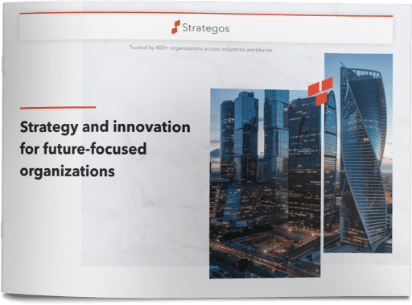Does innovation come from carefully planned research and facilitated ideation or is it the result of individuals that somehow seem to be able to come up with groundbreaking ideas. The latter seems to have been the case when we look at some well known examples both in science as well as business, e.g. Penicillin, Post-it notes, Cornflakes and the Microwave to name a few.
There have been many discussions about the ability of larger organisations to act and behave like start-ups and have a more entrepreneurial culture. The entrepreneur connects the dots, “sees” patterns and an idea emerges upon which he/she builds a business. While it is certainly true that large organisations could
benefit from this type of behaviour they are big for a reason. Large organisations focus on planning for predictable business outcomes while entrepreneurship
is often seen as a gamble that needs to be managed to reduce the risk on existing business operations. As long as the original business flourishes there is no problem.
But innovation is not and should not be an either/or discussion. In large businesses predictable outcomes need to be balanced with risk-taking for longer term survival. Managing both at the same time is a significant challenge, but it is possible and many have succeeded in doing so.
Let’s look at how perfumers come up with their fine fragrances.This is a mystery to us much in the same way that great painters create their art or musicians compose. Perfumers seem to take inspiration from a diversity of sources and often interact with artists from other disciplines. Insights into consumer preferences and a sense of cultural context of the target market are critical to create perfumes that appeal to the customer. The perfumer somehow associates all this information with the ingredients that they blend to create the perfumes that we want to buy.
Toa large extent this is a planned sequence of events to help the perfumergenerate ideas for new fragrances. While there is a high degree of creativity
and serendipity involved, (Chanel nr 5 is rumoured to have been the result of a mistake in the dosage of a certain ingredient) we can still see a carefully planned sequence of events,a managed business process with perfumers at the core of the operation. Serendipity and predictability co-exist.
We can learn from this narrative how to best facilitate both the seemingly random nature of serendipitous ideas and the rigour of progressing an idea from its inception to commercialisation. At the front end the question is how do we increase the chances of serendipity?
Our research shows that the basic ingredients for successful innovation is increasing the diversity of inputs and the number of interactions between them. That is why we find that in urban environments creativity flourishes because the high density and proximity of people causes more interactions between them. In businesses there are ways to facilitate this in terms of workplace design, e.g. Steve Jobs decision to place the bathrooms in the centre of the Pixar Atrium because it makes people run into one another during the day, but also in an organisational sense when people collaborate on innovation challenges.
Four principles that help to facilitate serendipity in the innovation process
1. Selecta diverse group of people
Take a diagonal slice of the company, look at roles, backgrounds (professional and personal), experience, expertise and personality. Think beyond what you believe you may need for this particular innovation challenge to include as many perspectives as there are individuals.
2. Start with a clear sense of purpose
There is no innovation without aspiration. Spark the innovation engine by letting people know why you are looking for new ideas, what is expected and how you will facilitate the process. People like to know why and what they are trying to achieve and how you will help them achieve these goals. What’s in it for them? What’s in it for the organisation?
3. Develop a diverse set of insights that stimulate discussion
Organisations rely heavily on readily available raw data. Information on trends is abundant and many companies make significant investments in customer research to drive their innovation activities. But to develop a process that drives new idea generation we need to increase the diversity of inputs by developing insights in additional categories (or lenses in Strategos lingo) including orthodoxies, competencies, customer needs and analogies.
4. Maximise the interactions over time
Facilitate the innovation process by making sure there is ongoing dialogue between the participants. Setup teams that collect, research and explore information using the lenses to develop their own perspectives and insights. Ensure enough time to organise meetings, workshops, interviews and observation sessions where teams discuss their findings, challenge core competencies and orthodoxies and synthesise combinations of trends. The value is as much in the resulting insights as it is in the journey the teams will make, the interactions they have, and the dialogue it enables.
These four activities can be managed and planned without jeopardizing the creativity involved in getting to significant results. As with the perfumer, there comes a time where we hope to have an “aha” or “eureka” moment. Often we won’t quite know how it happened, but what we can do as innovation professionals is make sure we increase the chances of it happening.





